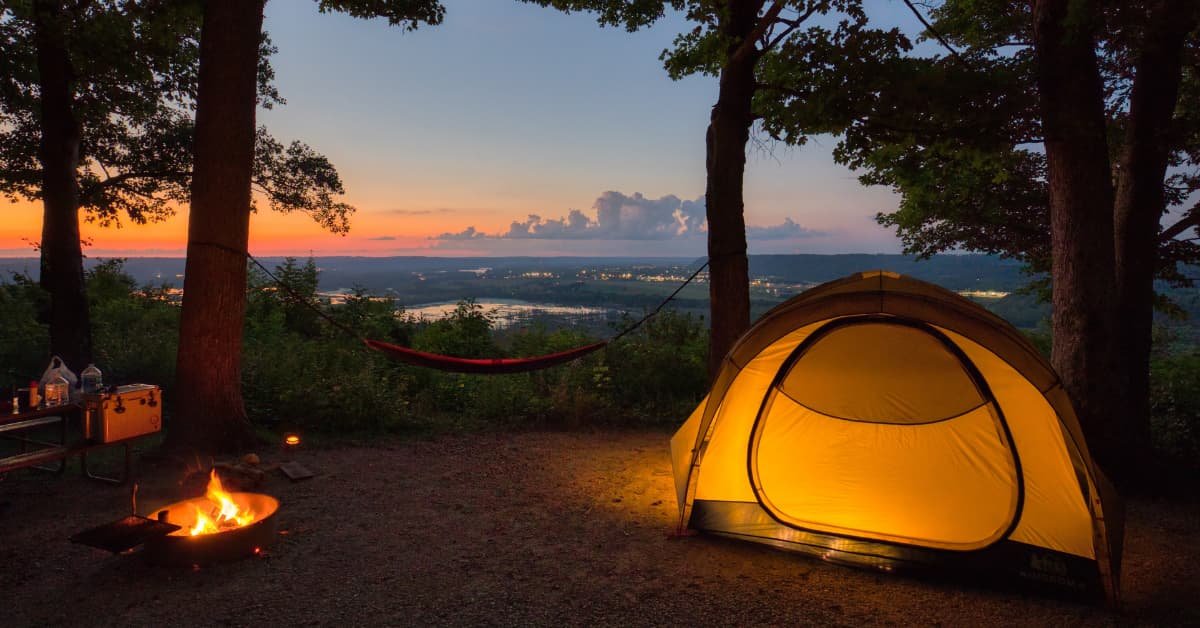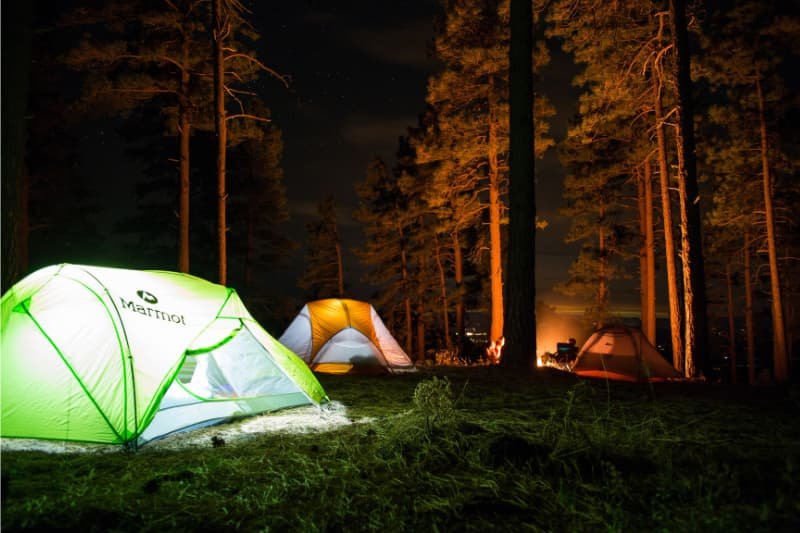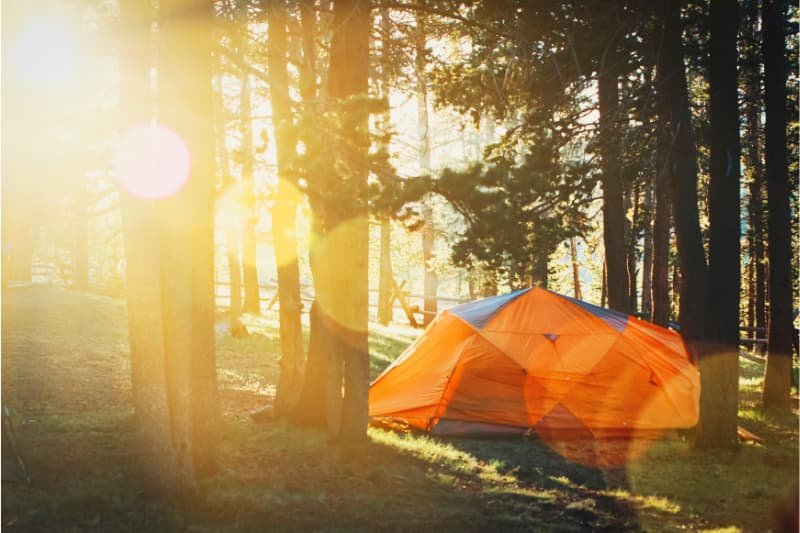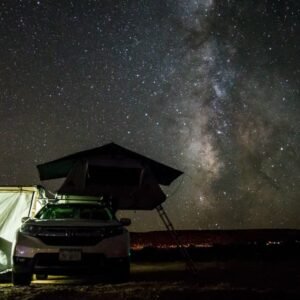
Camping in the summer is a popular way to enjoy the great outdoors, but it can also be a challenge to stay cool in the hot and stuffy environment of a tent. While electricity may not always be readily available, there are effective ways to beat the heat and stay comfortable.
One of the most important factors in tent cooling without electricity is location. Choosing a spot with natural shade or a breeze can make a significant difference in temperature control. Additionally, reducing sunlight exposure by setting up camp in a shaded area or using a canopy can help keep the tent cooler.
Creating a makeshift air conditioner, avoiding heat buildup, and using a space blanket for reflection are all additional strategies that can be employed to stay cool while camping in the summer. By following these practical tips, campers can enjoy a comfortable and refreshing experience in the great outdoors without relying on electricity.
Short Summary
- Location matters for staying cool, so look for heavily shaded areas and avoid other campers to avoid heat buildup.
- Put up your tent near a body of water for easy access to cool water and reduce the amount of sunlight that gets to your tent by finding areas that get little sunlight throughout the day.
- Create a makeshift air conditioner using a block of ice and a bucket, but be aware that other methods may be more suitable depending on supplies.
- Avoid the problem before it begins by setting up your tent last, as the tent can absorb heat and become much hotter than comfortable. Also, consider using space blankets to reflect heat from the sun and keep your tent cool.
Location Matters

The effectiveness of cooling a tent without electricity is heavily dependent on the location chosen. Choosing a shaded area for setting up the tent can help avoid direct sunlight exposure and reduce heat buildup. Look for areas with tree canopies or other natural shade sources. Proximity to bodies of water is also important for easy access to cool water. Setting up camp near a river, lake, or stream can provide a natural source of cooling. It’s important to note that setting up too close to bodies of water can also cause humidity and condensation inside the tent, so finding a balance is key.
In addition to seeking out shaded areas and proximity to water, reducing sunlight exposure can also contribute to a cooler and more comfortable camping experience. Look for areas that get little sunlight throughout the day, especially during midday and afternoon when the sun is at its strongest. Avoid setting up camp near other campers as their tents can contribute to heat buildup.
By considering these factors when choosing a location for your tent, you can set yourself up for a more enjoyable camping trip.
Reduce Sunlight Exposure
Minimizing direct sunlight exposure in your camping area is like putting on sunscreen for your tent – it can prevent uncomfortable sunburn and keep the temperature at a manageable level.
One way to reduce sunlight exposure is by planting trees around your camping area. Trees provide natural shade and can significantly reduce the amount of sunlight that reaches your tent. However, it is important to ensure that the tree branches do not pose a potential hazard during high winds or storms.
Another way to reduce sunlight exposure is by using tarps. Tarps can be used to create a makeshift canopy above your tent, providing additional shade and reducing the amount of sunlight that reaches your tent. When using tarps, ensure that they are securely fastened to prevent them from becoming a hazard during high winds or storms.
Additionally, it is important to ensure that the tarps are not touching the tent, as this can trap heat and reduce airflow, making the tent hotter.
By minimizing sunlight exposure, you can keep your tent cool and comfortable during your camping trip.
Make a Makeshift AC
Creating a makeshift air conditioner can be a practical solution for campers who need to cool their tent without relying on electricity. One popular method is the ice bucket method, which involves placing a block of ice in a bucket and positioning it in front of a fan. As the fan blows air over the ice, it creates a cool breeze that can help lower the temperature inside the tent.
This DIY air conditioning method is easy to set up and can be effective in reducing heat buildup. In addition to the ice bucket method, campers can also improve tent ventilation to promote natural airflow. This can be achieved by opening windows and doors, using mesh screens to keep bugs out, and positioning the tent in a location that allows for cross-ventilation.
By allowing air to circulate freely, campers can create a more comfortable environment inside the tent. With a little creativity and resourcefulness, it is possible to stay cool and comfortable while camping without relying on electricity.
Avoid Heat Buildup

To prevent excessive heat within a camping tent, proper location selection is crucial. Choosing a heavily shaded area can significantly decrease the amount of direct sunlight entering the tent and reduce heat buildup. It is important to avoid setting up camp in areas that receive strong direct sunlight during the midday or afternoon hours. Additionally, finding areas that receive little sunlight throughout the day can be beneficial.
Proper ventilation is also important in preventing heat buildup within the tent. This can be achieved by leaving the tent door and windows open to allow for a natural flow of air. If there is no breeze, creating ventilation can be achieved by placing a fan near the entrance of the tent to draw in cooler air. Choosing a location with access to cool water, such as near a body of water, can also help regulate the temperature within the tent.
Overall, selecting a shaded location with proper ventilation is key to staying cool while camping.
Space Blanket for Reflection
Utilizing a space blanket for reflection can significantly decrease the amount of heat entering the camping tent and create a more comfortable environment for campers. Space blankets are made of a thin and reflective material that can reflect any form of heat, making them an ideal solution for cooling a tent without electricity.
Here are some pros and cons, alternatives, and cost considerations for using space blankets for tent cooling:
Pros:
- Effective in reflecting heat from the sun and keeping the tent cool
- Lightweight and easy to pack for camping trips
- Can be used for other purposes, such as emergency blankets or ground cover
Cons:
- Space blankets can make the tent unsightly
- May not be as effective in extremely hot temperatures
- May not be as durable as other tent-cooling solutions
Alternatives:
- Reflective tarps or blankets
- Shade cloth or mesh netting
- DIY reflective panels made from cardboard and aluminum foil
Cost:
- Space blankets can range in price from $5 to $20, depending on the brand and size
- Reflective tarps or blankets can cost between $20 to $50
- Shade cloth or mesh netting can cost between $10 to $30, depending on the size and quality.
Overall, using a space blanket for reflection is a cost-effective and efficient solution for cooling a tent without electricity. However, campers should also consider alternatives and weigh the pros and cons before making a decision.
FAQs:
What are some other options for staying cool in a tent besides finding a shaded location?
Cooling options for tents without shade include using portable fans powered by batteries or solar panels, investing in a tent with built-in ventilation and insulation, and using cooling accessories such as ice packs or cooling towels. Practical and experienced advice is to research and invest in reliable cooling equipment.
Can the makeshift air conditioner method be used in any type of tent or are there specific requirements?
The makeshift air conditioner method can be used in most types of tents as there are no specific requirements. However, it is important to ensure that the tent is properly ventilated to prevent condensation buildup and that the block of ice is placed in a container to avoid water damage.
What should campers do if they are unable to find a shaded location for their tent?
Finding a shaded location is crucial for a comfortable camping experience. If there are no shaded areas available, alternative solutions such as using tarps or creating shade with a canopy may be necessary. The importance of proper tent placement cannot be overstated.
Are there any safety precautions that should be taken when using a space blanket for heat reflection?
When using a space blanket for heat reflection, it is important to take safety precautions such as keeping it away from direct contact with flames or heat sources. It should also be secured properly to avoid any accidents or injuries.
How can campers prevent their tent from absorbing too much heat during the day?
To prevent tents from absorbing too much heat during the day, campers can use tent insulation or reflective tarps. These materials reflect the sun’s rays and prevent heat from entering the tent, keeping it cool and comfortable.



